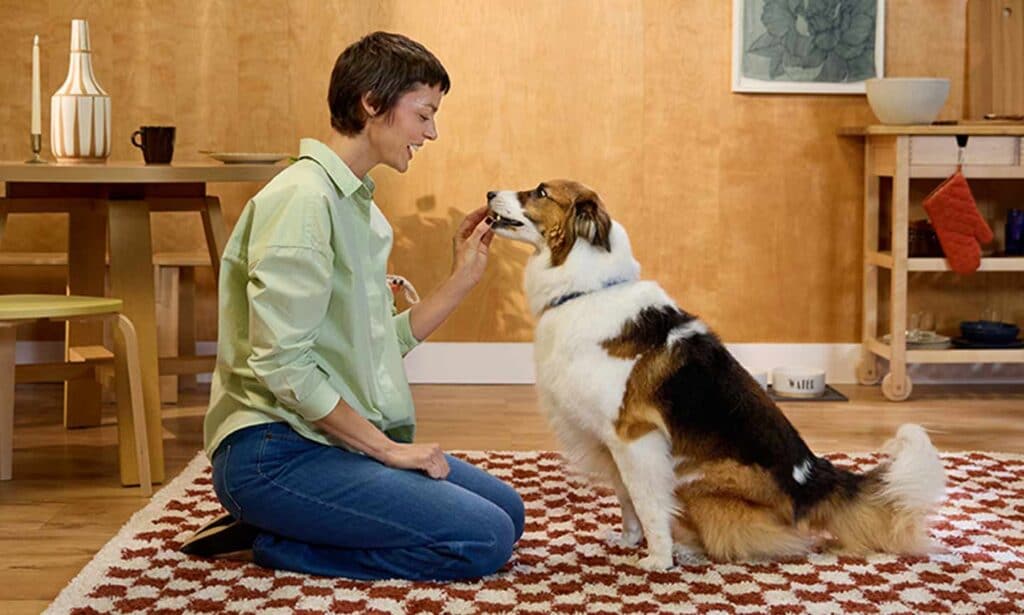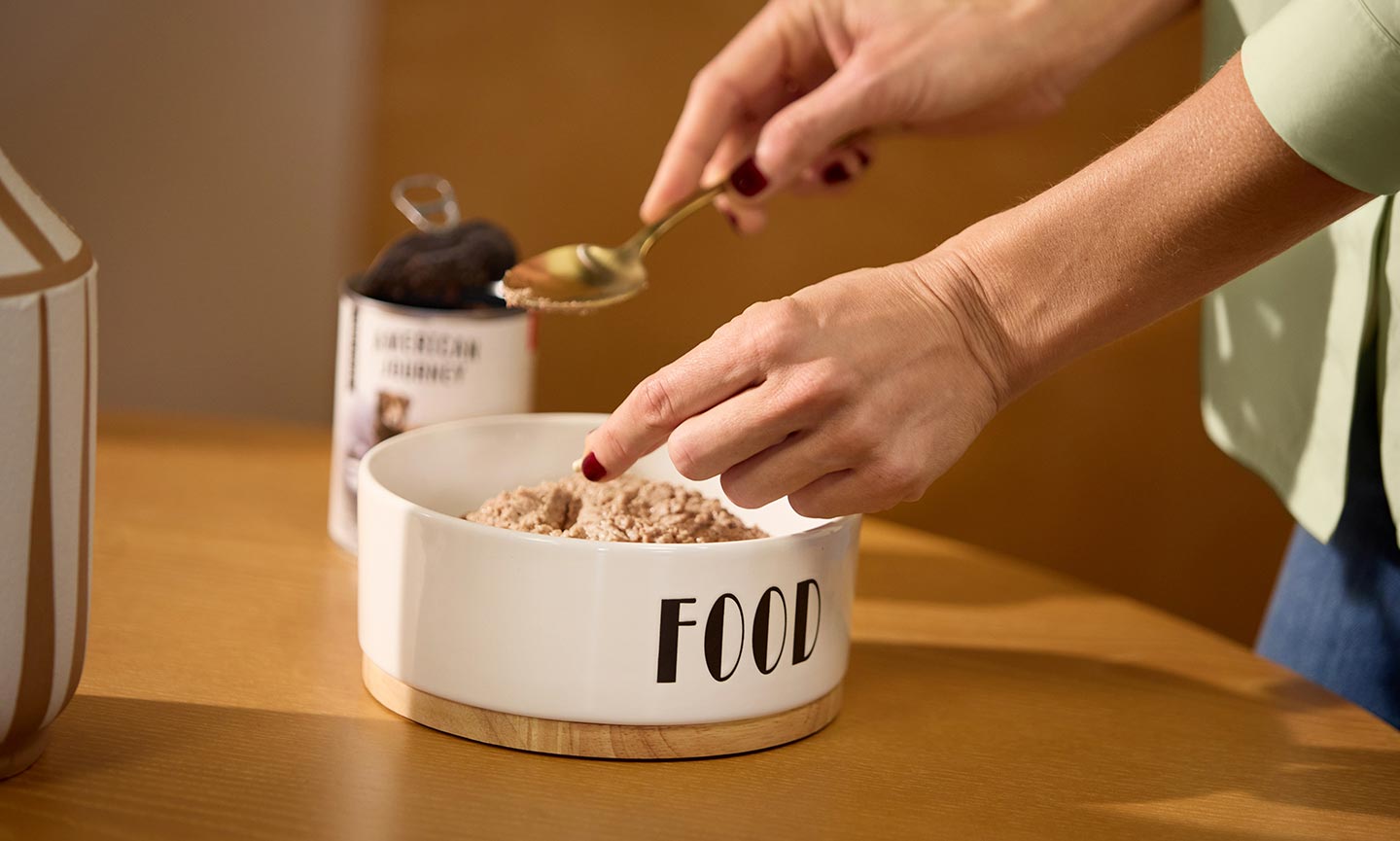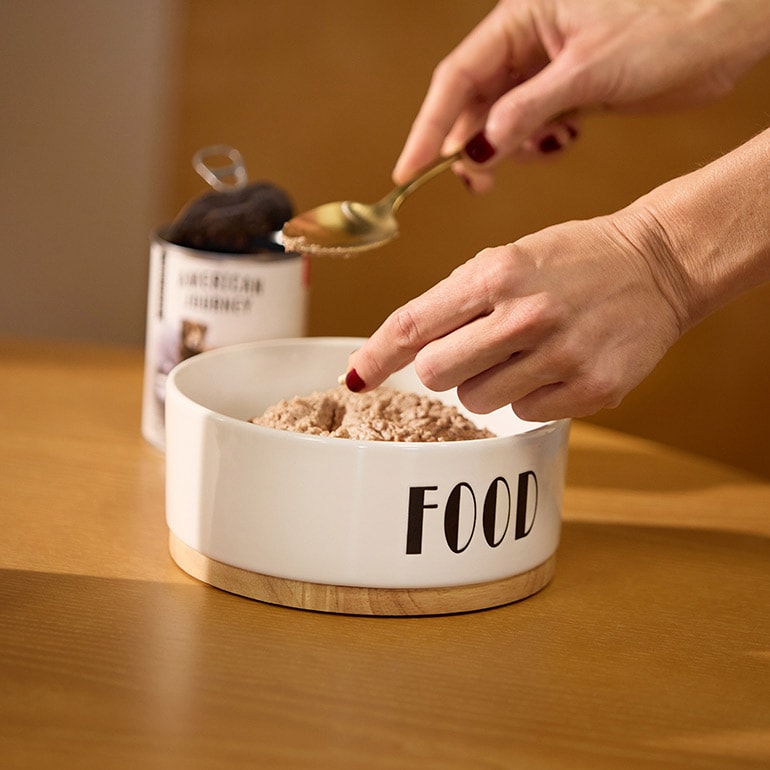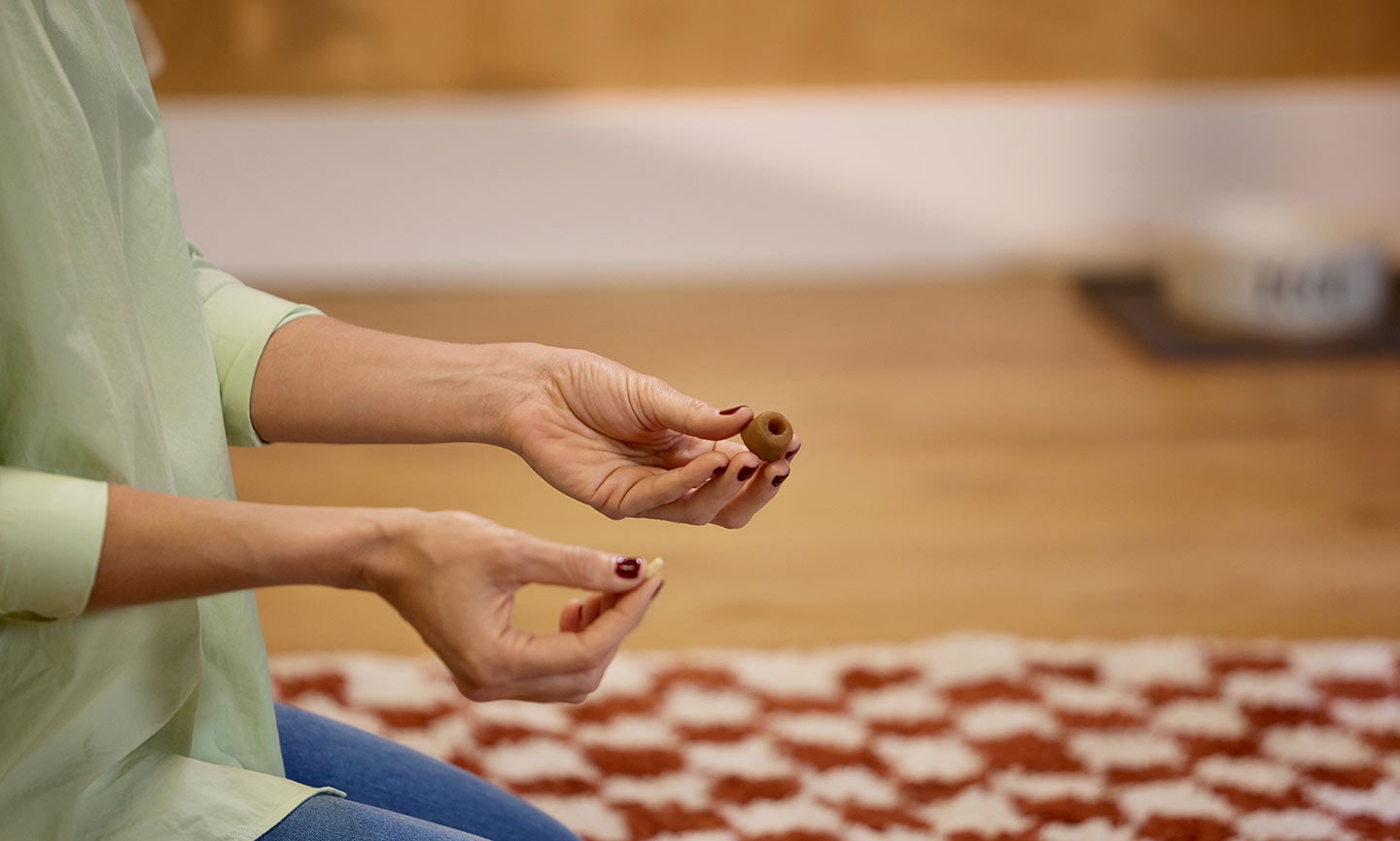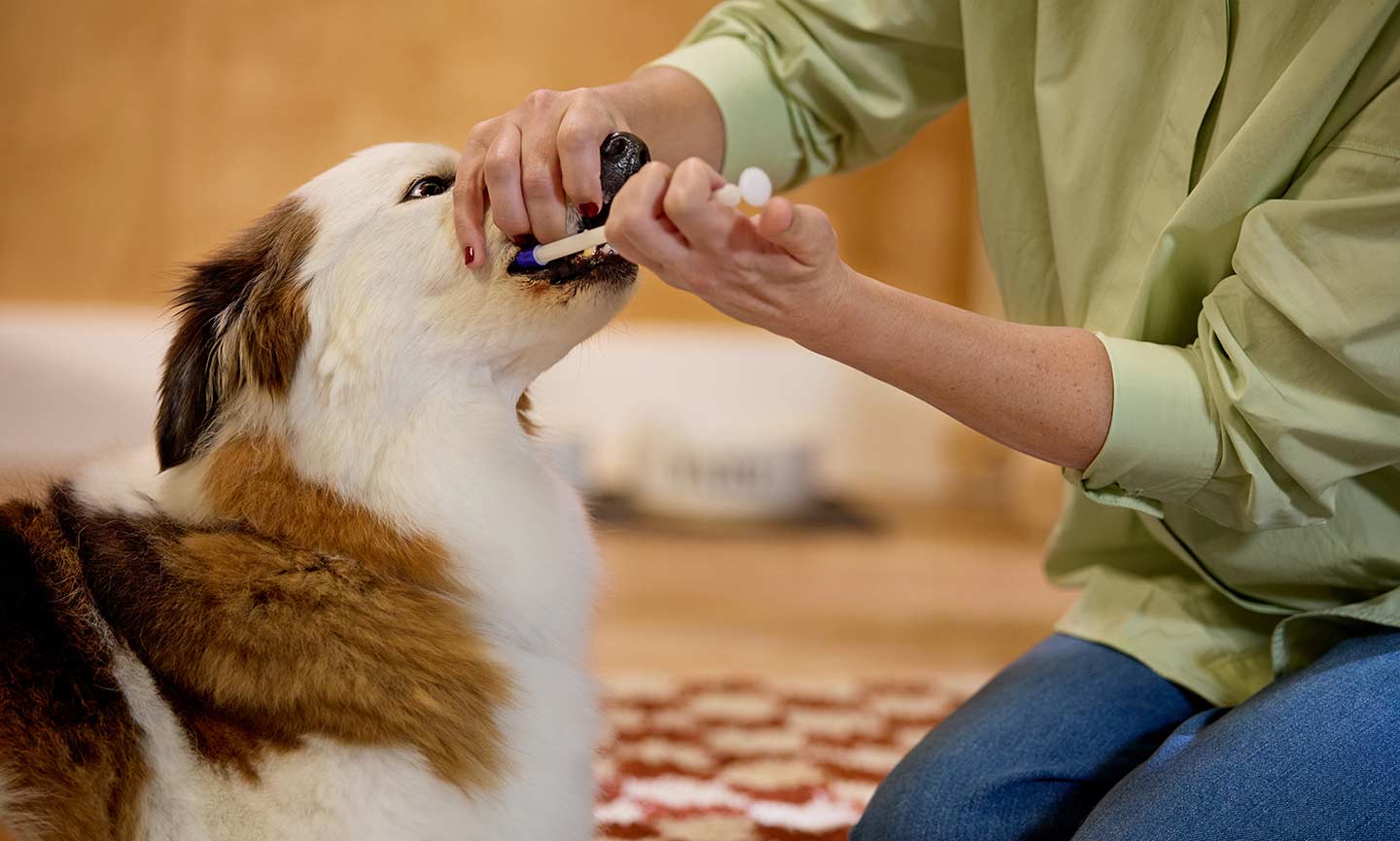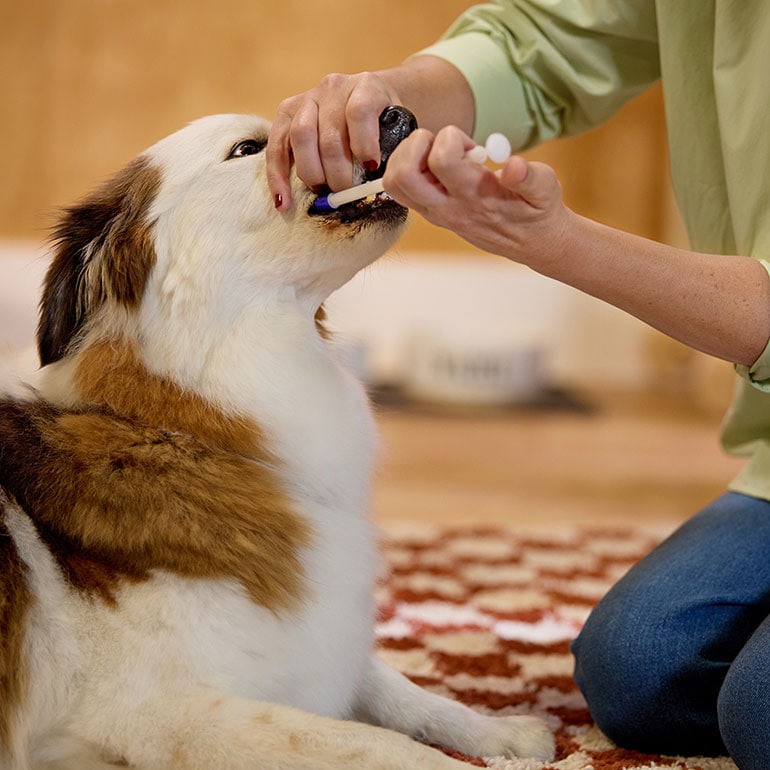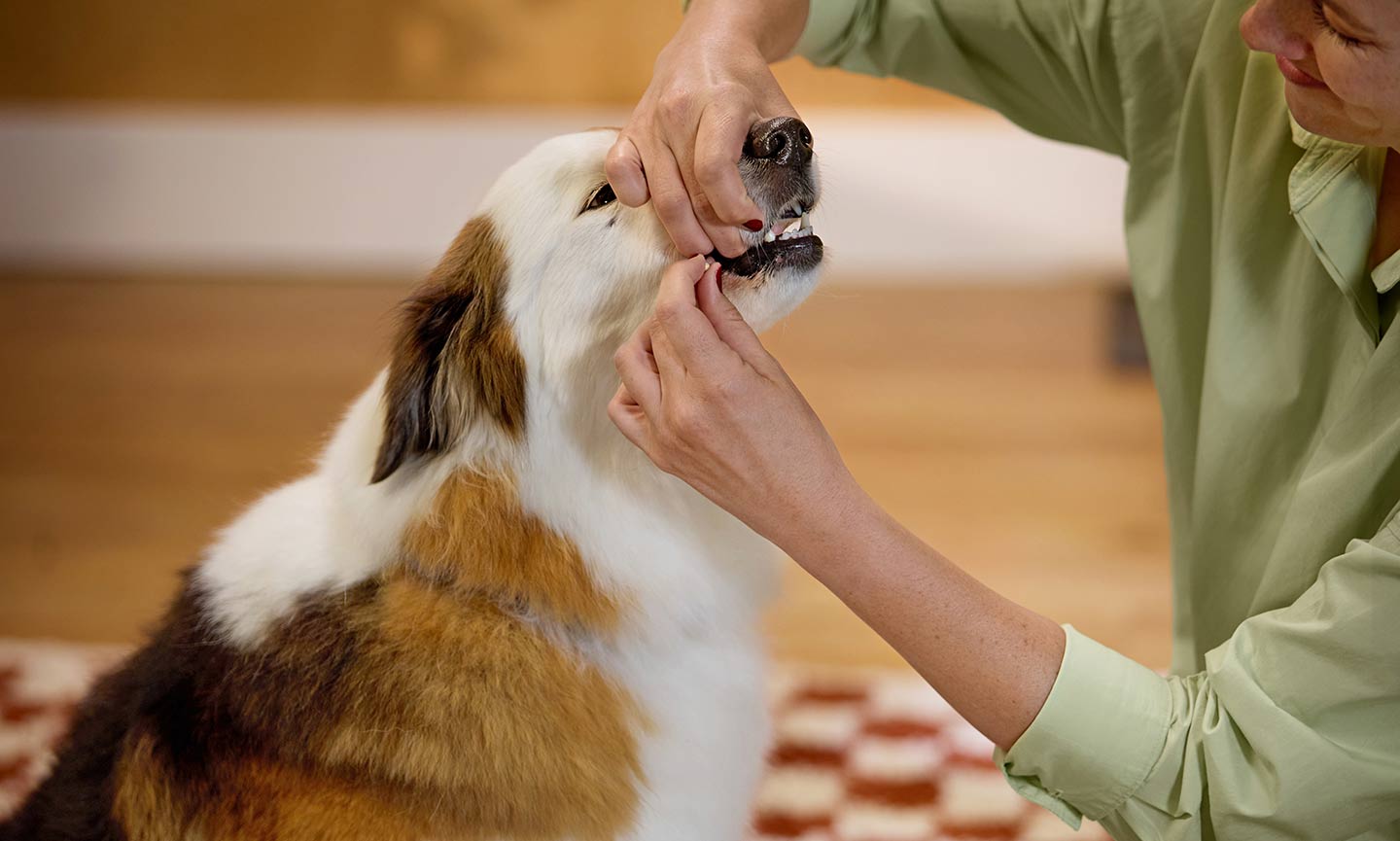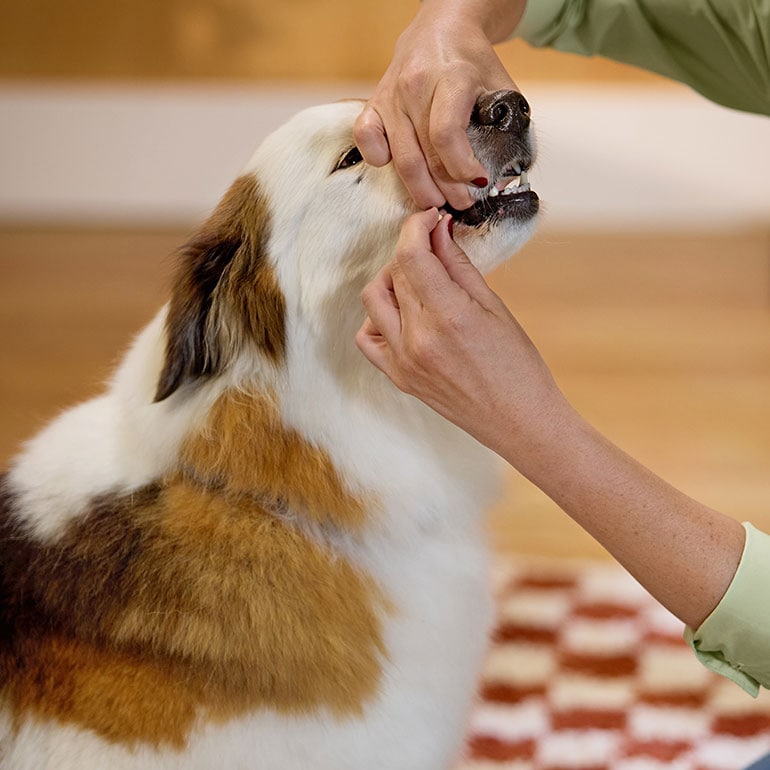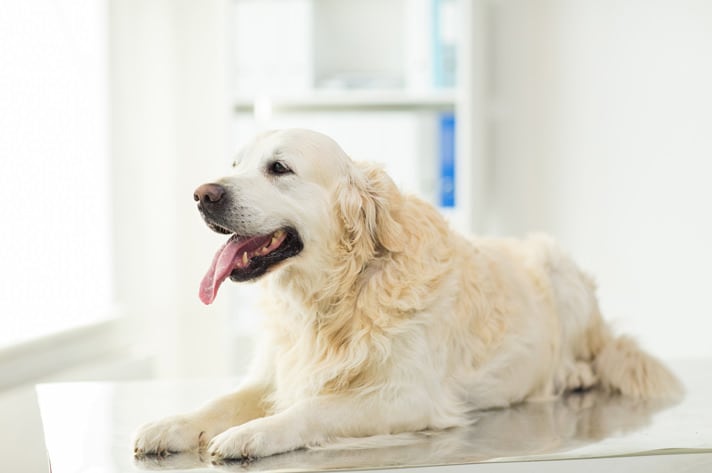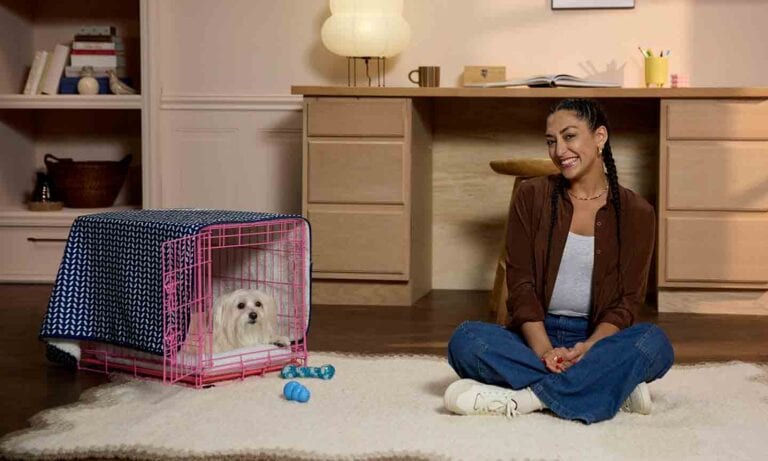So, your veterinarian has prescribed pills for you to give to your dog at home. “Sure,” you’re thinking, “but how do I get my pup to actually take the darn things?” It can sometimes be a challenge, especially if the medication tastes funny (or if your dog has a stubborn personality). So, how do you give a dog a pill—and make sure they swallow it?
There’s no one correct answer. Different strategies work for different pups, so we’re explaining four different ways to give your dog a pill. Work your way through them until you find the most successful option for your unique dog, and they’ll be feeling better in no time!
Before You Begin
It’s easy to get medications confused, especially if your dog is prescribed multiple different types. So, before you try any of the strategies below, take a moment to double check the following:
- Is this the correct medication? Check your pill bottle’s label, as many pills and pill containers look similar.
- Am I giving the correct dose? Read the prescription label to confirm that you’re giving the right amount of the medication.
- Is it time to give the medication? The prescription label should also explain how often your dog needs to take it.
- Does my dog need to take it with food? If so, have food at the ready. (You can even use it to hide your dog’s pill—more on that below.) Alternatively, some meds should be taken on an empty stomach, which may prevent you from trying some of the food-based methods below. If you’re unsure about how much food your dog can take with a certain medication, talk to your veterinarian.
- Does the medicine need to be refrigerated? If so, make sure that it’s properly stored both before and after giving it to your dog. Talk to your vet if your medication is accidentally left out of the fridge.
- Do I need to plan for side effects? If a medication may cause your dog to be drowsy and disoriented, for example, make sure you’ve prepared a safe area for them where they’ll be unlikely to fall and injure themselves.
If you have questions about anything related to your dog’s medication, call your vet’s office and ask.
One last important note: If your dog growls, tries to bite or becomes fearful during any of the below steps, stop trying to give the pill and call your vet for advice. Giving medication is never worth a bite wound to yourself, and there are several ways to get the medication into your dog without risk to yourself or to your relationship with your dog.
4 Ways to Give a Dog a Pill
1Hide the pill in food or treats.
If your dog’s medication can be given with food, this is the easiest and least stressful way to administer it. Dogs will be more likely to accept medication if it is hidden in a dish of food or a tasty dog treat that they already love. In fact, they might just hoover it up without even noticing the pill was there!
Follow these tips to increase your chances of success:
Start with a hungry dog.
Give pills hidden in food or treats on an empty stomach when possible—making sure that it’s appropriate for your dog’s condition and medication, of course. Then, feed your dog their regular meal afterwards. This will build a positive association to taking pills in your dog’s mind, thanks to the food element, which can motivate them to take their pill even more happily in the future.
Choose an exciting food or treat.
If your dog’s more of a kibble and dry treats kind of pup, it’ll be harder (if not impossible) to hide their pill in their usual diet. And even if your dog typically eats wet or fresh food that makes hiding pills easier, this is still a great time to introduce an exciting new food, which can make giving a pill even more of a happy occasion for you both. Depending on your dog’s favorite flavors, and what’s appropriate for them to eat with their current condition, you could hide the pill in:
- A meatball
- A piece of cheese
- A piece of hot dog
- Canned dog food
- Cream cheese
- Xylitol-free peanut butter
- Asmall amount of butter
- Deli meats (turkey, liverwurst, ham, salami, etc.)
- A small scoop of vanilla ice cream
- A small portion of plain yogurt
These are just some of the many foods you could try. Honestly, any human food that is safe for dogs is worth a shot—again, as long as it’s safe for your unique dog, considering their health condition. If you are unsure of what is OK for your dog, ask your DVM.
Hide it well.
The process of actually hiding the pill will vary depending on what food or treat you use. In general, however, follow these tips:
- Make sure the food surrounds the pill so it’s completely hidden. You may have to use your hands to mold the food around it.
- Use only a small amount of food so that it doesn’t require chewing. A dog who bites into a bitter-tasting pill may react by spitting it out.
Some dogs are really hard to fool, and may spit out the pill even if you’ve sneaked it into a treat. If this happens to you, wait 30 minutes and then try again, using a different type of treat.
Still no luck? Try giving a couple of “blank” treats first (aka treats that don’t contain the pill), and then give a treat that has a pill hidden in it, all in rapid succession. This just might build enough excitement in your dog that they don’t notice when the pill-filled treat is offered.
If your pup is just too smart to let you sneak medicine by them this way, though, try the next option.
2Use a pill pocket.
Pill pockets are soft, moldable dog treats that are designed to cover up the smell and taste of pills and liquid medications. You can hide your dog’s pills inside one of these in much the same way you would with other foods, keeping in mind that the pocket should fully surround the pill.
Important note: Most pill pockets are fairly healthy and safe for most dogs, but it is always best to check with your vet before giving one to your dog. Some brands are high in sodium and may not be a good choice for dogs with heart disease or kidney disease.
3Use a pet piller.
A pet piller, also known as a pill gun or “pill popper,” is a syringe-type tool designed to help you deliver the pill far back in your dog’s mouth, where it will be harder for them to spit out. This also allows you to avoid your dog’s teeth, if you’re nervous about trying to give them a pill by hand. (More on that in the next step.)
Important note: Do not try giving a pill by pill popper or by hand to a dog with a painful neck, back, or mouth, as your dog may bite you to avoid increased pain.
To use a pet piller, follow these steps:
- Start with your dog in an area that’s comfortable for you both, and where they cannot escape.
- Load the pill into the soft end of the device opposite the plunger.
- Gently but firmly grasp your dog’s muzzle from above with your non-dominant hand, placing your thumb and fingers right behind the big canine teeth on either side of the upper jaw.
- Tilt your dog’s head up to the ceiling. This will usually cause the lower jaw to drop open slightly, at which point you can use the middle finger of your dominant hand to open the jaw further.
- Insert the pill popper into your pet’s mouth far enough so you can depress the plunger and deposit the pill onto the back of your dog’s tongue. Be sure to not go too far back into the mouth or you can poke the back of your dog’s throat!
- Press the plunger to deposit the pill.
- Close your dog’s mouth and bring their head back to a normal position.
- Massage their throat to encourage swallowing. You may also try lightly blowing on their nose. You will notice your dog swallowing and often licking their lips after they have swallowed a pill.
Follow this procedure with a treat and praise for a job well done! It’s also a good idea to offer your dog water, or use a plastic syringe to squirt some into the corner of their mouth if necessary, to help the pill travel down the esophagus.
4Give the pill by hand.
Sometimes, you have to take matters into your own hands—literally, in this case. But remember: Do not try giving a pill by hand to a dog with a painful neck, back, or mouth, as this could result in a dog bite.
To give your dog a pill by hand, follow these steps:
- Start by rolling the pill in a small amount of dog food gravy or butter (as long as it’s OK’d by your vet). This will help the pill slide down easily.
- Start in a comfortable area for you and your dog. Avoid letting your dog see the pill.
- Hold the pill between your index finger and the thumb of your dominant hand.
- Gently but firmly grasp your dog’s muzzle from above with your non-dominant hand, placing your thumb and fingers right behind the big canine teeth on either side of the upper jaw.
- Tilt your dog’s head up to the ceiling. This should cause the lower jaw to drop open slightly, at which point you can use the middle finger of your dominant hand to open the jaw further.
- Once the mouth is open, quickly drop the pill on the back of the tongue, as close to the back of the mouth as possible.
- Once you have dropped the pill in, close your dog’s mouth and bring your dog’s head back to a normal position.
- Gently massage your dog’s throat and/or lightly blow on their nose to encourage swallowing.
Remember to follow with a treat and praise, plus water to help wash the pill down.
What if My Dog Still Won’t Take a Pill?
Sometimes, despite your best efforts, you still can’t get your dog to take a pill. Don’t worry—this is a common situation. Here is what to do if that happens to you:
- Ask if you can get their medication in a different form. Most medications can be formulated (aka compounded) into tasty liquids that you can squirt into your dog’s mouth. Some medications can even come in the form of transdermal lotions that can be rubbed into your dog’ ear flap, avoiding oral administration altogether.
- Ask about injectables. Some meds are available as a one-time injectable medication that your vet can administer. This may cost a little more, but for many people, it is worth it.
- Hire help. Some professional dog walkers or pet sitters offer to administer medication as part of their services. You can also take your dog to their veterinary clinic daily to have vet staff give the pills. That might be an inconvenience, but hey, when it comes to your dog’s health, you’ve gotta do what you’ve gotta do!
More Dog Health Tips
Share:
